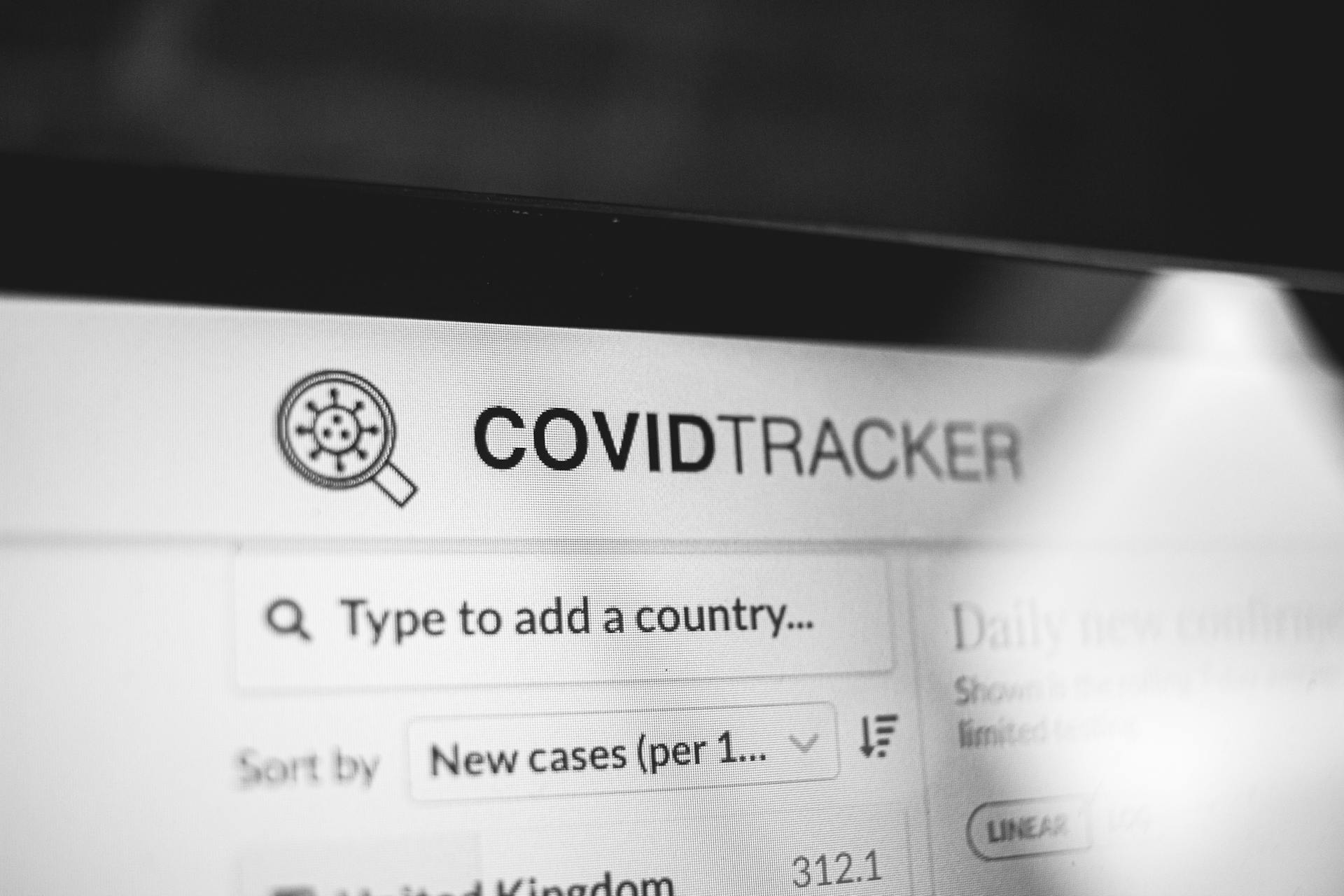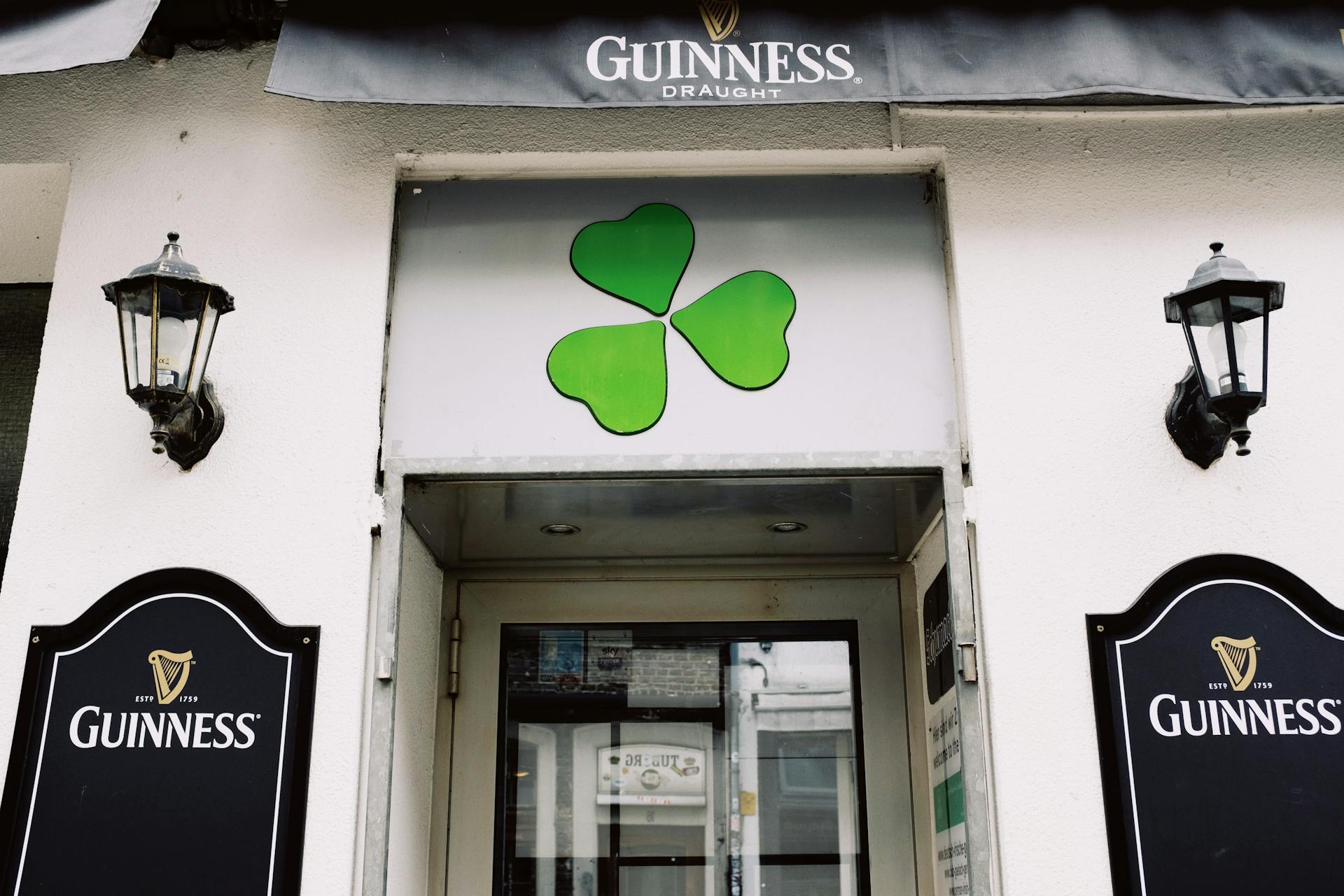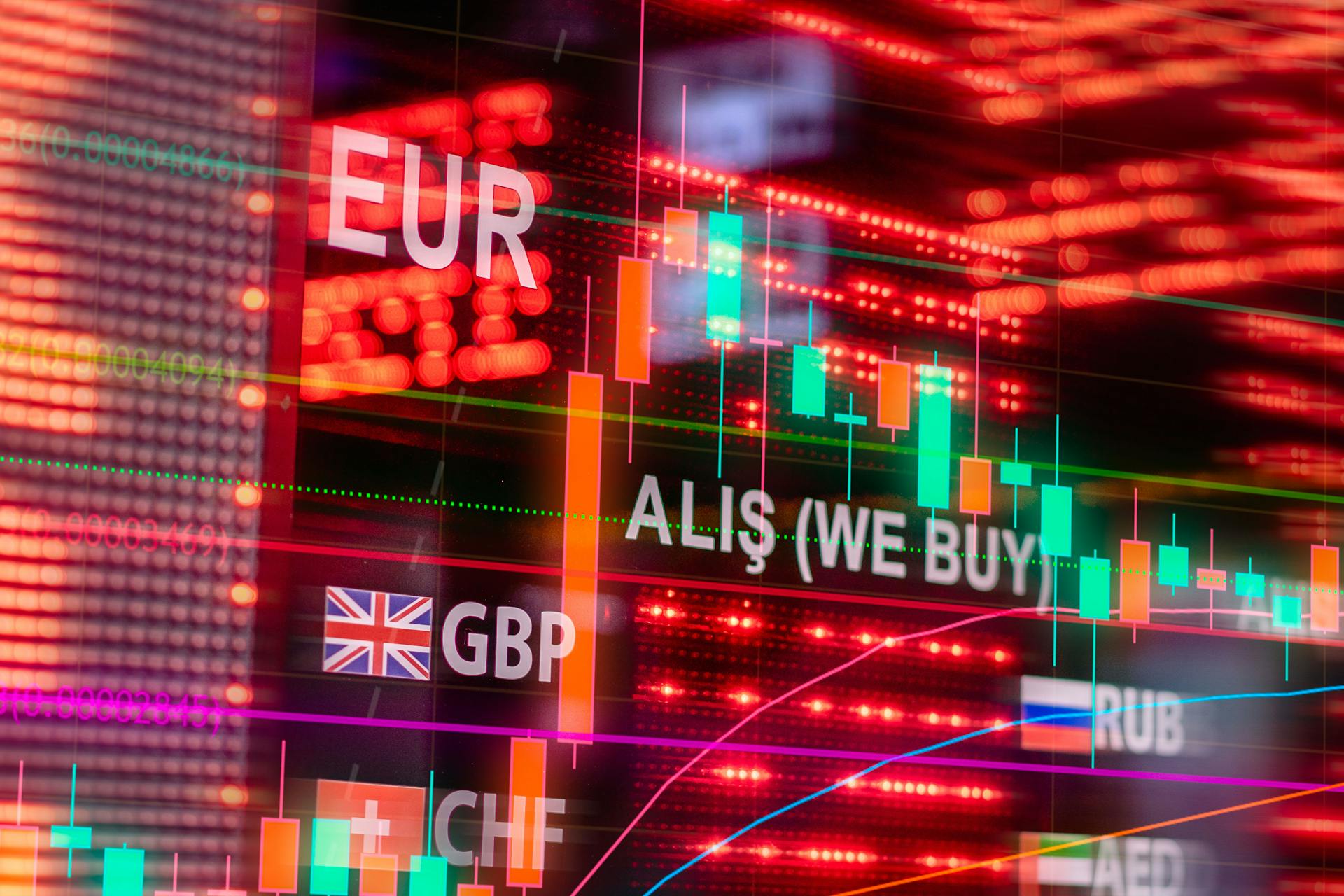
Investing in a global index tracker can be a straightforward and cost-effective way to gain exposure to a wide range of assets worldwide.
By tracking a specific market index, such as the MSCI ACWI Index, you can replicate the performance of the entire global market with minimal effort and expense. This approach can be a great option for investors who want to diversify their portfolios and reduce risk.
One of the key benefits of global index tracker investing is that it allows you to spread your investments across different asset classes, sectors, and geographic regions, which can help to reduce risk and increase potential returns.
Take a look at this: Credit Cards for Investing
What Are Index Trackers?
Index trackers are a simple way to invest, providing instant diversification in one low-cost investment. They aim to closely track a particular stock market or index, often by investing in every stock in the index.
Index trackers are available at an extremely low cost, with no manager or analysts to pay. Platform charges still apply, though.
There's plenty of choice when it comes to index trackers, with options available for UK markets and those focusing further afield.
Consider reading: Cost of Funds Index
Benefits and Types
Global index trackers offer several benefits, including cost-effectiveness, as they typically have lower fees compared to actively managed funds. This can result in higher returns over the long term.
One of the key types of global index trackers is the MSCI ACWI Index, which tracks the performance of over 2,500 stocks from 23 developed and 23 emerging markets. This broad diversification can help reduce risk and increase potential returns.
By tracking a global market index, investors can gain exposure to a wide range of assets and sectors, spreading risk and increasing the potential for long-term growth.
What Is Passive Investing?
Passive investing is a cost-effective way to invest, with the cost of investing being drastically cheaper compared to actively managed funds.
Passive investing means the securities held in your fund are not chosen by a portfolio manager.
You're also in it for the long haul as a passive investor, limiting the amount of buying and selling within your portfolio.
Passive investors follow a rules-based, transparent, and investable strategy that doesn't involve identifying mispriced individual securities.
An example of a passive approach is the purchase of an index fund that follows a major index like the FTSE 100 in the UK or the S&P 500 in the US.
For another approach, see: Portfolio Visualizer Omega Ratio
Pros

Creating your own index fund can be a cost-effective option. You can save money compared to buying a pre-packaged global tracker.
By doing it yourself, you also gain more control over sector and country allocations, allowing you to tailor your portfolio to your specific needs.
Here are some key benefits to consider:
- Cheaper than buying a pre-packaged global tracker
- Allows more control over sector and country allocations
Types of Index Funds
Index funds come in two main types: open-ended funds (Oeics) and exchange-traded funds (ETFs). Oeics are not traded on the stock market and can take days to buy and sell, while ETFs can be bought and sold when the market is open.
ETFs can be a good option for investors who want to trade their funds frequently, but they can also charge trading commissions that can add up quickly. Oeics, on the other hand, can be a good option for investors who want to hold their funds for a long time.
Some index funds charge large entry or exit fees, which can be a huge drag on returns in the long run. For example, some funds on the market charge as much as 5% for new investors.
Expand your knowledge: Viking Global Investors
The best fund for you might depend on which is the cheapest and easiest to buy and sell. Many online stockbrokers have different charging structures for different funds, so it's worth shopping around to find the best deal.
Here are some of the cheapest passive tracker funds (Oeics and ETFs) on the market right now:
Passive vs Active Investing
Beating the market is difficult, and most active funds fail to do so, with 64.5% of them underperforming their benchmark indices over the past year.
High fees are a significant contributor to this underperformance, making active funds a potentially unadvisable way to invest in the stock market.
Over the last 10 years, just 35% of active equity funds performed better than their passive counterparts, according to AJ Bell's Manager versus Machine report.
The results are hardly a ringing endorsement of the value attached to active management, as noted by Laith Khalaf, head of investment analysis at AJ Bell.
Investors in 9,036 active funds were worse off than if they had invested in an index tracker, highlighting the potential risks of active investing.
Additional reading: Global Equity Market Index Portfolio
Investment Strategy
An investment strategy is a crucial part of global index tracking. It helps you allocate your money into different regions, such as the UK, Emerging Markets, and Developed World Ex. UK.
The example portfolio allocates 6% to the UK, 10% to Emerging Markets, and 84% to Developed World Ex. UK. You can tweak these allocations to suit your needs, like increasing the UK allocation to 10% and decreasing Developed World Ex. UK to 80%.
To calculate the total investment cost, you need to multiply the cost of each fund by its proportional weighting in your portfolio and add them up. For example, the Vanguard FTSE U.K. All Share Index Unit Trust costs 0.06%, so if you allocate 6% of your portfolio to it, the total cost would be 0.06% x 6% = 0.0036%.
Here's a breakdown of the costs for the example portfolio:
The total investment cost for the example portfolio is 0.0036% + 0.023% + 0.1176% = 0.1442%. This is in contrast to the FTSE Global All Cap Index, which costs 0.23%. By choosing the right funds, you can save up to £85 per year on a £100k portfolio.
Weightings and Markets
For a global index tracker, we need to consider the weightings of different markets. Emerging Markets account for around 11% of the global market according to MSCI.
A reasonable allocation for Emerging Markets is about 11%, which is calculated based on the size of the Emerging Markets indices relative to the global index. This is a simple and straightforward approach.
Developed Markets Ex. UK can be calculated by subtracting the Emerging Markets and UK allocations from 100%. This results in an allocation of 84% for Developed Markets Ex. UK.
This means that for a two-fund investment strategy, we could invest 90% of our money into a Developed Markets fund and 10% into an Emerging Markets fund to approximate a global equity tracker.
A fresh viewpoint: What Is a Tracker Mortgage
Determining Global Sector Weightings
Determining global sector weightings is the first step in building a global tracker. The three main companies dealing in indices, MSCI Inc., S&P Dow Jones, and FTSE Russell, have their own methodologies, but their weightings turn out to be very similar, to within 2% or 3% of each other.
You can use the allocation that Vanguard publishes, which is a good starting point. Developed Markets Ex. UK, UK, and Emerging Markets are the three main sectors to consider.
Breaking down Developed Markets into smaller regions like Europe, America, UK, Japan, and Pacific Ex. Japan can get too complex, with potentially six funds to manage. I believe it's best to keep it simple with a maximum of three funds for a global equity tracker.
To determine the weightings, you can use the allocation that Vanguard publishes, or you can calculate it yourself using the Emerging Markets and UK allocations. For Developed Markets Ex. UK, an allocation of 84% is suitable, as the 10% for Emerging Markets and 6% for UK add up to 16%.
Here's a simple breakdown of the Developed Markets Ex. UK allocation:
- Developed Markets Ex. UK: 84%
- Emerging Markets: 10%
- UK: 6%
You can also use this allocation to approximate a global equity tracker with just two funds: Developed Markets and Emerging Markets. In this case, the allocation would be 90% for Developed Markets and 10% for Emerging Markets.
For more insights, see: Emerging Stocks Scanner Thinkorswim
Weightings for EM Markets
Emerging Markets (EM) are a collection of countries, making it difficult to determine their weighting in the same way as developed markets.
The MSCI Emerging Markets Index has a market cap of $4,384,934.52 million, while the corresponding global index (the ACWI index) has a market cap of $39,962,383.81 million.
This gives us an allocation of about 11% for Emerging Markets according to MSCI.
For S&P indices, the market cap of the S&P Emerging BMI index is $1,148,071,024 million, calculated by multiplying the mean market cap by the number of constituents.
The S&P indices suggest an allocation of 18% or so is suitable for emerging markets.
FTSE Russell indices give us the market cap directly, with the Emerging Markets index having a market cap of $3,696,279 million.
This gives us an allocation of 9% to Emerging Markets according to FTSE Russell.
A compromise between the S&P index and the MSCI & FTSE Russell indices suggests an allocation of 10% to Emerging Markets.
Take a look at this: FTSE SmallCap Index
Investment Approaches
You can choose between two main investment approaches: active and passive investing. Active investing involves trying to beat the market by picking individual stocks or funds, while passive investing involves tracking a specific index, like a global index tracker.
Active funds often come with higher fees, which can eat into your returns. In fact, a report found that 64.5% of actively managed funds failed to beat their benchmark indices over a 12-month period.
Passive investing, on the other hand, can be a more cost-effective option. According to the article, the BlackRock UK tracker is 0.02% cheaper than Vanguard's UK tracker at 0.06%.
The benefits of passive investing are clear: lower fees and the potential for higher returns over the long term. For example, a global index tracker with a 0.14% cost can save you 0.085% per year compared to an active fund with a 0.23% cost.
Here's a rough idea of the cost savings you could expect:
By choosing a passive investment approach, you can keep more of your hard-earned money and let compound interest work its magic over time.
Implementation and Tools
To implement a global index tracker, you'll need to allocate your money into different regions, as shown in the example where 6% is allocated to the UK, 10% to Emerging Markets, and 84% to Developed World Ex. UK.
You can use Vanguard funds as an example, but it's essential to find the cheapest possible funds, such as the BlackRock UK tracker, which is 0.02% cheaper than Vanguard's UK tracker at 0.06%.
To calculate the total investment cost, you'll need to multiply the cost of each fund by its proportional weighting in your portfolio and add them up. For instance, the total cost in the example is 0.16% of the portfolio's value per year.
Here's a table showing the example fund allocations and costs:
Implementing Our Investment Strategy
Implementing our investment strategy is a crucial step in achieving our financial goals. We've decided to allocate our money into the UK, Emerging Markets, and Developed World Ex. UK regions.
A fresh viewpoint: Uk Index Funds
We've worked out a rough allocation: 6% to the UK, 10% to Emerging Markets, and 84% to Developed World Ex. UK. This means we'll be investing in funds that track these regions.
To compare costs, we'll use Vanguard funds as an example. At the time of writing, the BlackRock UK tracker is 0.02% cheaper than Vanguard's UK tracker at 0.06%. We'll invest in Vanguard's FTSE U.K. All Share Index Unit Trust, Vanguard Emerging Markets Stock Index, and Vanguard FTSE Developed World ex-U.K. Equity Index.
Here's a breakdown of our fund choices and their costs:
To calculate our total investment cost, we multiply the cost of each fund by its proportional weighting in our portfolio and add them up. This gives us a total cost of about 0.16% of our portfolio's value in costs to funds per year.
Stay Current with Market Data
Staying current with market data is crucial for making informed investment decisions. You can get the latest share prices and market data by checking online platforms or financial websites.
FTSE companies provide a wealth of information, including news, factsheets, and performance charts. This data can be accessed through various accounts, such as a Stocks and Shares ISA or a Self-Invested Personal Pension (SIPP).
Investment accounts, like a Junior ISA or Junior SIPP, also offer market data and tools to help you stay on top of your investments. By regularly checking these resources, you can make more informed decisions about your portfolio.
Here are some common types of accounts that provide market data:
- Stocks and Shares ISA
- Self-Invested Personal Pension (SIPP)
- Investment Account
- Junior ISA
- Junior SIPP
Frequently Asked Questions
What is a global index tracker?
A global index tracker is a low-cost investment that tracks the performance of a broad range of companies worldwide, spreading risk across many shares. It's a simple way to invest in the global market with potentially lower risk.
Which global index fund is best?
Choosing the best global index fund depends on your investment goals and risk tolerance, but popular options include the Vanguard FTSE All-World ex-US ETF/Index VEU and the iShares Core MSCI Total International Stock ETF IXUS. Consider your individual needs and research these funds further to make an informed decision.
What if I invested $1000 in S&P 500 10 years ago?
Investing $1,000 in the S&P 500 10 years ago would have returned around $3,282 to $3,302, more than tripling your initial investment. This impressive growth highlights the long-term potential of investing in a low-risk asset like the S&P 500.
Is a global tracker a good investment?
A global tracker is a low-cost, diversified investment option that provides access to top-performing companies worldwide. Consider it a smart choice for investors seeking to beat the market without high fees.
Sources
- https://www.fidelity.co.uk/markets-insights/investing-ideas/funds/fidelity-index-world-a-best-selling-global-tracker-fund/
- https://www.hl.co.uk/funds/index-tracker-funds
- https://www.fidelity.co.uk/markets-insights/investing-ideas/funds/4-tracker-fund-ideas-from-our-select-50/
- https://ukpersonal.finance/diy-global-tracker/
- https://moneyweek.com/investments/funds/604317/best-low-cost-index-funds-to-buy
Featured Images: pexels.com


